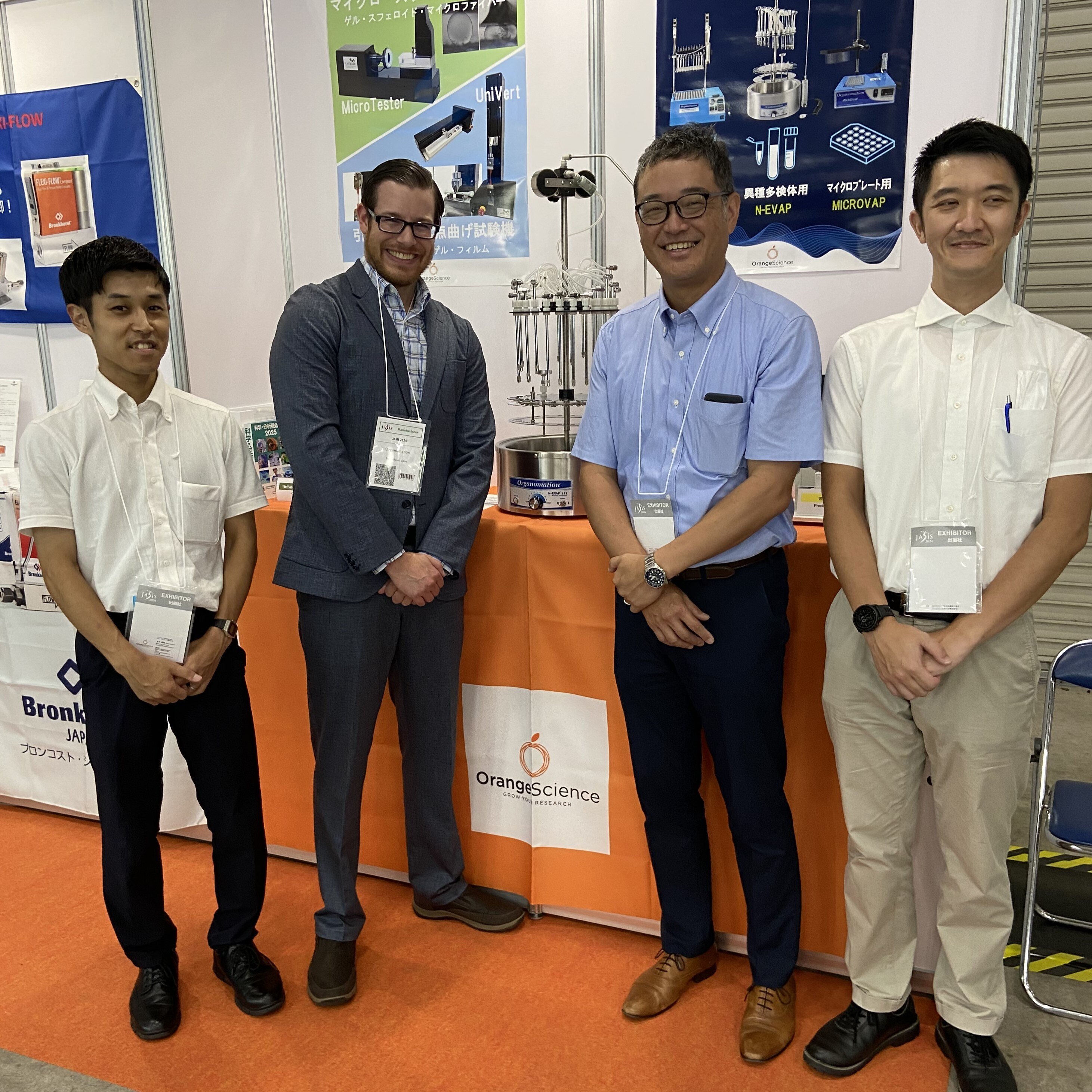Environmental, Microplate Evaporators, PFAS
/ Organomation
Organomation General Manager David Oliva with authorized distributor Orange Science at JASIS, the Japan Analytical and Scientific Instruments Show. Japan is one of the countries currently regulating PFAS levels in their drinking water.
Without a doubt, one of the most critical areas of research in analytical chemistry at the moment regards Per- and Polyfluoroalkyl Substances, also known as PFAS. Organomation’s multi-sample evaporators play a key role in concentrating such samples, commonly after extraction. Drinking water samples are then analyzed for these Forever Chemicals through various methods of chromatography.
In the United States, the common regulated methods created by the Environmental Protection Agency are EPA 533 and EPA 537 (and 537.1)
- EPA 533 looks for a broader range of PFAS compounds and involves samples to be prepared with solid-phase extraction (SPE) and nitrogen blow down followed by liquid chromatography-tandem mass spectrometry (LC-MS/MS)
- EPA 537 looks at a smaller list of PFAS compounds. The updated 537.1 includes analysis for PFOA and PFOS variations. In the application, samples are prepared through solid-phase extraction (SPE) and nitrogen blow down followed by liquid chromatography-tandem mass spectrometry (LC-MS/MS).
Organomation evaporators are directly cited in both of these US EPA methods
The safety of drinking water is clearly a concern of all nations. At the international level, both International Organization for Standardization (ISO), the European Committee for Standardization (CEN), and ASTM International, previously known as American Society for Testing and Materials, have produced methods equivalent to EPA 537:
- ISO 25101: 2009 - Determination of of perfluorooctanesulfonate (PFOS) and perfluorooctanoate (PFOA) in drinking and non-potable waters using SPE and LC-MS/MS.
- ISO 21675: 2019 - Determination of perfluoroalkyl substances (PFAS) in both drinking and non-potable water using SPE and LC-MS/MS. This method is similar to ISO 25101 but covers a wider range of PFAS.
- EN 17892: 2024 - Determination of selected per- and polyfluoroalkyl substances in drinking water using LC-MS/MS. This method covers 20 PFAS in accordance with the EU Drinking Water Directive EU 2020/2184.
At a national level, countries other than the United States have also created their own regulated methods for this space:
- Germany (DIN 38407-42: 2011): Determination of selected polyfluorinated compounds (PFC) in water using HPLC/MS-MS after solid-liquid extraction. This method covers 10 PFAS compounds in both potable and non-potable waters.
- Japan: Japan's National Institute of Health Sciences has developed a method for determination of PFOS, PFOA, and PFHxS in drinking water using SPE and LC-MS/MS as part of their Tap Water Quality Inspection Manual.
- Canada: Health Canada has developed their own internal protocol based on EPA 537, but they also recommend that certain jurisdictions use US EPA method 533 for the determination of PFAS in drinking water.
Limits for PFAS in Drinking Water
- Canada: 30 ng/L for a sum of 25 PFAS
- EU: 100 ng/L for the sum of 20 PFAS, 500 ng/L for the sum of all PFAS – requirements to comply begin in 2026.
- USA: 4 ng/L for each of PFOS and PFOA
- Sweden: 4 ng/L for the sum of 4 specific PFAS and 4 ng/L for the sum of 21 PFAS
- Norway/Finland: 100 ng/L for the sum of 20 PFAS in accordance with EU 2020/2184, coming into effect in 2026
- Denmark: 2 ng/L for the sum of 4 specific PFAS and 100 ng/L for the sum of 22 PFAS
- Australia: 560 ng/L for PFOA, 70 ng/L for the sum of PFOS and PFHxS
- Japan: 50 ng/L for the sum of PFOS and PFOA
- China: 40 ng/L for PFOS, 80 ng/L for PFOA
